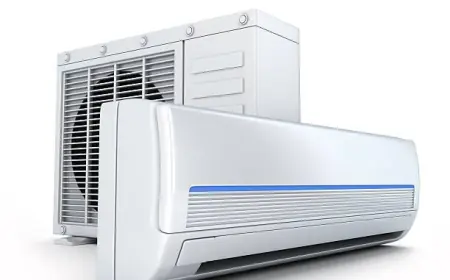Smart Robot Market: Growth, Trends, and Forecast for 2025-2034
Smart robots are machines designed to perform tasks autonomously or semi-autonomously by utilizing sensors, AI, machine learning, and robotics technologies.

The smart robot market is undergoing rapid expansion, propelled by the growing need for automation across industries. With labor shortages and increasing demands for operational efficiency, businesses are turning to smart robots to streamline their operations. These robots, equipped with advanced artificial intelligence (AI), machine learning, and autonomous capabilities, are transforming industries such as manufacturing, healthcare, logistics, and more. The market, valued at approximately USD 12.10 billion in 2024, is expected to grow at a compound annual growth rate (CAGR) of 27.20% during the forecast period from 2025 to 2034, reaching an estimated value of nearly USD 134.17 billion by 2034.
This article provides a detailed analysis of the smart robot market, including its growth drivers, key trends, market dynamics, opportunities, challenges, and competitive landscape.
Overview of the Smart Robot Market
Smart robots are machines designed to perform tasks autonomously or semi-autonomously by utilizing sensors, AI, machine learning, and robotics technologies. These robots can analyze their environment, learn from it, and adapt their behavior accordingly, making them highly efficient and capable of handling complex tasks in various industries.
Key features of smart robots include autonomous navigation, human-robot interaction (HRI), self-learning capabilities, and advanced decision-making algorithms. The adoption of these robots is being driven by factors such as the growing need for labor efficiency, improvements in AI technology, and the desire for higher precision and reduced human error in critical applications.
Smart robots are increasingly deployed in industries like manufacturing, healthcare, logistics, agriculture, and consumer products. They are used for tasks ranging from assembly line work and warehouse management to surgical procedures and elderly care. As AI continues to advance, the capabilities of smart robots are expected to expand even further, creating new opportunities for their integration into various sectors.
Get a free sample request: https://www.expertmarketresearch.com/reports/smart-robot-market/requestsample
Size & Share of the Smart Robot Market
In 2024, the global smart robot market is valued at USD 12.10 billion, and it is projected to grow at a CAGR of 27.20% over the forecast period of 2025-2034. By 2034, the market is expected to reach a total value of approximately USD 134.17 billion.
The rapid growth in the adoption of smart robots is being fueled by several factors:
-
Labor Shortages: Many industries are facing significant labor shortages, particularly in regions like North America and Europe. Smart robots are being deployed to fill the gap, especially in repetitive tasks or in environments that are hazardous to humans.
-
Operational Efficiency: As businesses seek to enhance productivity and reduce costs, the demand for robots capable of automating complex processes is growing. Smart robots can work 24/7, perform tasks with higher precision, and eliminate human errors.
-
Advances in AI and Robotics: Technological advancements in AI and robotics, including machine learning, deep learning, and computer vision, are making smart robots more capable and versatile. This is driving innovation and increasing the range of applications for these robots.
Regional Market Insights
-
North America: North America holds a significant share of the global smart robot market, driven by technological advancements and the presence of major companies like iRobot, ABB Ltd., and Fanuc Corporation. The region is also witnessing strong growth in sectors such as manufacturing, healthcare, and logistics, where robots are being deployed for automation.
-
Europe: Europe is another key market for smart robots, with countries like Germany, the UK, and France leading the charge. The automotive and manufacturing industries in this region are increasingly adopting smart robots to enhance efficiency, reduce costs, and stay competitive in a globalized market.
-
Asia-Pacific: The Asia-Pacific region is expected to experience the highest growth during the forecast period, with countries like Japan, China, and South Korea making significant investments in robotics and AI. The region is home to several robotics manufacturers, and the increasing adoption of smart robots in industries such as electronics, automotive, and logistics is expected to drive market growth.
-
Latin America & Middle East: The smart robot market in Latin America and the Middle East is in its early stages but shows significant potential due to growing investments in automation and the increasing demand for smart robotics in manufacturing and logistics.
Market Dynamics & Trends
Several factors are contributing to the growth of the smart robot market, including advancements in technology, evolving market demands, and increasing investments in automation.
Key Market Drivers
-
Labor Shortages: The global shortage of skilled labor is pushing industries to adopt smart robots that can perform repetitive tasks, reducing dependence on human workers. Robots are increasingly being deployed in industries such as manufacturing, logistics, and healthcare, where labor shortages are particularly acute.
-
Rising Demand for Automation: As companies strive to improve operational efficiency and reduce production costs, the demand for smart robots is increasing. These robots help businesses streamline workflows, increase productivity, and maintain high levels of precision, especially in manufacturing environments.
-
Technological Advancements in AI and Robotics: The evolution of AI and machine learning technologies is enabling robots to perform more complex tasks, make real-time decisions, and learn from experience. This has led to an expansion of the applications for smart robots, from simple automation tasks to more sophisticated roles like surgical assistance and personalized care.
-
Improved ROI: Companies are increasingly recognizing the potential for robots to deliver a high return on investment (ROI). Robots can work continuously, eliminate errors, and lower labor costs, which makes them attractive investments for businesses in a variety of sectors.
Emerging Trends
-
Collaborative Robots (Cobots): Collaborative robots are designed to work alongside humans, providing assistance in tasks such as assembly, packaging, and logistics. Cobots are equipped with advanced sensors and AI algorithms to ensure safe interaction with humans, making them a popular choice in industries where human-robot collaboration is essential.
-
Healthcare and Elderly Care: With an aging population in many countries, robots are being increasingly used in healthcare and elderly care. Robots can assist with tasks such as monitoring health, administering medication, and providing companionship, improving the quality of life for elderly individuals.
-
Drones and Autonomous Vehicles: The rise of autonomous drones and vehicles is another trend that is driving the growth of the smart robot market. Drones are being used for applications ranging from surveillance and delivery services to agriculture, while autonomous vehicles are being tested for use in logistics and passenger transport.
Growth Factors in the Smart Robot Market
The smart robot market is expected to continue its strong growth, driven by several key factors:
-
Increasing Automation Across Industries: The demand for automation in industries like manufacturing, automotive, healthcare, and logistics is fueling the adoption of smart robots. Robots can perform tasks faster and more accurately than humans, helping businesses remain competitive in a rapidly evolving market.
-
Advancements in AI and Machine Learning: As AI technology becomes more advanced, smart robots are becoming more capable of understanding their environment, making decisions, and learning from experience. This opens up new possibilities for robots to perform tasks that were previously thought to be impossible.
-
Cost Reductions: As technology improves, the cost of smart robots is decreasing, making them more accessible to a wider range of industries. This is leading to increased adoption, especially in sectors where robots were previously too expensive to implement.
Market Opportunities and Challenges
Opportunities
-
Healthcare Robotics: The healthcare industry offers vast opportunities for the use of smart robots in areas such as surgery, diagnostics, elderly care, and rehabilitation. Robots equipped with AI can assist doctors in performing complex surgeries with precision, while service robots can help monitor and care for elderly patients.
-
Robotics in Logistics: The logistics industry is increasingly adopting robots for warehouse automation, package sorting, and delivery services. With the rise of e-commerce, the demand for smart robots in logistics is expected to increase, creating new growth opportunities for the market.
-
Manufacturing Industry: The manufacturing sector is one of the largest adopters of smart robots. With the increasing need for precision, efficiency, and cost reduction, manufacturers are investing in robots to automate assembly lines, quality control, and material handling.
Challenges
-
High Initial Investment Costs: While the long-term benefits of smart robots are clear, the initial investment required for purchasing and integrating robots can be high. This could limit adoption among small and medium-sized businesses, especially in developing markets.
-
Technical Challenges: Despite advancements in AI and robotics, there are still technical challenges in making robots capable of performing a wide range of tasks autonomously. Developing robots that can safely and efficiently interact with humans in complex environments is an ongoing challenge for manufacturers.
Competitor Analysis
The smart robot market is highly competitive, with several key players leading the industry. Some of the top players in the market include:
-
ABB Ltd.: ABB is a global leader in robotics and automation, providing smart robots for a wide range of industries, including manufacturing, automotive, and logistics. The company is known for its collaborative robots (cobots) and industrial automation solutions.
-
iRobot Corporation: iRobot is one of the leading players in the consumer robotics segment, particularly known for its Roomba robotic vacuum cleaners. The company is also expanding its offerings in commercial and industrial robotics.
-
Fanuc Corporation: Fanuc is a Japanese manufacturer of industrial robots and factory automation systems. The company’s robots are widely used in manufacturing, automotive, and aerospace industries.
-
Yaskawa Electric Corporation: Yaskawa is a major player in the robotics market, offering a wide range of industrial robots for applications such as material handling, welding, and assembly.
-
Kuka AG: Kuka is a leading German manufacturer of industrial robots and automation solutions. The company is known for its high-performance robots used in manufacturing, automotive, and logistics.
The global smart robot market is set for remarkable growth over the next decade, driven by technological advancements, the need for automation, and the growing adoption of AI-powered robots across industries. With a projected market value of USD 134.17 billion by 2034, the opportunities in this space are vast.
Toy Manufacturers:
https://www.expertmarketresearch.com/articles/top-toys-companies
What's Your Reaction?
 Like
0
Like
0
 Dislike
0
Dislike
0
 Love
0
Love
0
 Funny
0
Funny
0
 Angry
0
Angry
0
 Sad
0
Sad
0
 Wow
0
Wow
0



















































